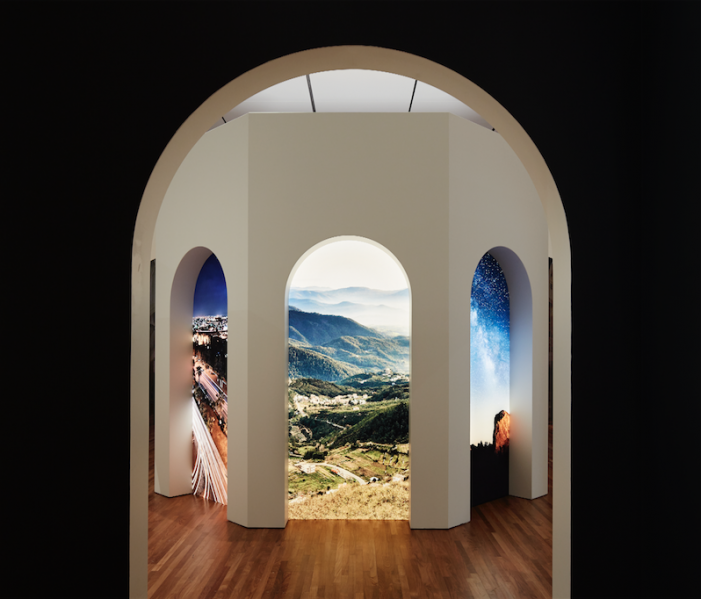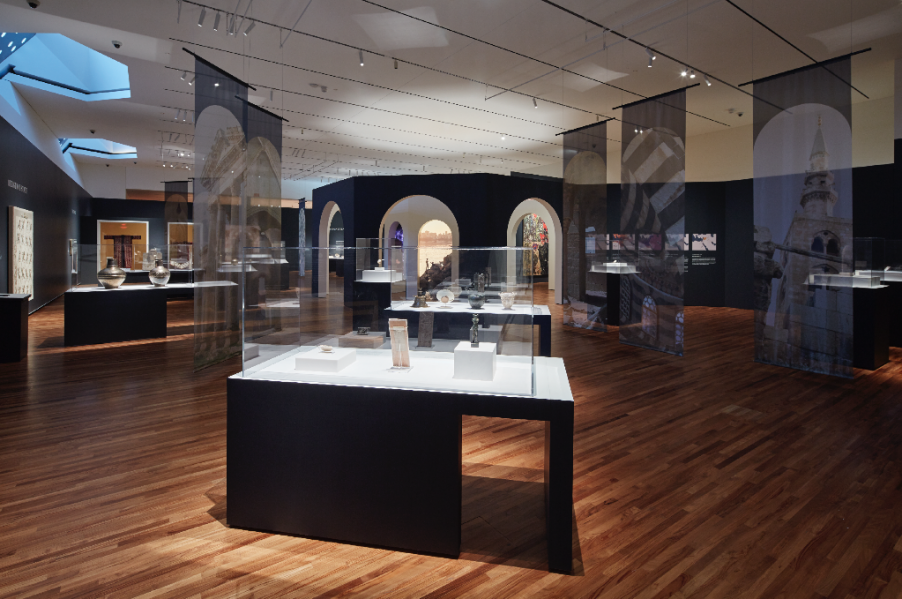Exhibition Review: Heritage and Conflict—Syria’s Battle to Save its Past

From the so-called Western world, we watch in horror as a massive human tragedy unfolds in the Middle East. Since 2012 in Syria, over 400,000 people have been killed and more than 11 million displaced. This ongoing humanitarian crisis is also a crisis of cultural heritage: countless artifacts, monuments, and buildings have been destroyed, including six UNESCO World Heritage sites; and Syria’s largest city Aleppo, among the world’s oldest continuously inhabited settlements, is in ruins.
Amid such senseless destruction and despair, the Aga Khan Museum in Toronto has launched an encouraging and thought-provoking exhibition, Syria: A Living History, celebrating Syria’s “cultural diversity, historical continuity, resourcefulness, and resilience.” The lecture by Dr. Maamoun Abdulkarim on October 16th, one in a series of related events, shared the latest chapter in this epic story. Dr. Abdulkarim is former director of the Archaeology Department at the University of Damascus and has been serving as Syria’s Director-General of Antiquities and Museums since 2012. Speaking to distinguished guests and a capacity crowd in the serene Aga Khan Museum Auditorium, Dr. Abdulkarim presented moving testimony of loss and devastation, offset by accounts of courageous and creative acts of preservation still underway.

Together with 2,500 staff, Dr. Abdulkarim is responsible for overseeing 34 national museums and 10,000 heritage sites widely dispersed in the war-ravaged region. Soon after his 2012 appointment, on the heels of expanding conflict, Dr. Abdulkarim wisely chose to close all of Syria’s museums for the safety of visitors and artifacts alike. He then began orchestrating the transportation of more than 300,000 artifacts to undisclosed safe-havens. Many have lauded this prescient and risky action for having saved numerous works from theft and destruction. For this endeavor, requiring careful coordination across sharp political divides and involving collaborators from all sides of the conflict, Dr. Abdulkarim was awarded the inaugural 2014 Cultural Heritage Rescue Prize (established by Italy’s Associazione Priorità Cultura and the Institute for Cultural Diplomacy in Berlin). Remarkably, he presented his efforts with modesty and hope, characterizing the work as an apolitical project of peace and understanding.
Of Armenian and Kurdish background, Dr. Abdulkarim himself embodies the cultural diversity definitive of Syria, with its long history as a place of exchange. First shaped by Assyrian, Aram and Phoenician civilizations, Syria developed through the prolonged mingling of many interrelated cultures. The ancient city of Palmyra (site of ISIS-perpetrated atrocities in 2015) once marked an intersection of ancient trade routes linking Persia, India, China and the Roman Empire. Over the course of millennia, the cross-fertilization of peoples and customs engendered uniquely integrative arts and traditions, complicating distinctions between East and West. By saving Syria’s cultural artifacts, Dr. Abdulkarim and his team are preserving for generations to come a layered story we all have a meaningful share in. Through the framing and timing of this lecture and exhibition, the Aga Khan Museum urges us to see Syria not simply as a site of regional conflict but as a global crucible of cultural exchange and potential reconciliation.

We should not only be outraged by inexcusable devastation, but also provoked to appropriate action. For Canadian architects, this includes reconsidering how well we are working to preserve and cultivate comparably diverse heritage in our own region, especially the vulnerable heritage of Indigenous peoples.
The exhibition Syria: A Living History runs until February 26, 2017.
A lecture by Dr. Ross Burns, Aleppo: A City and Its Architecture, will be held on November 13th at 2pm. See the museum website for tickets and more details on related programming. https://www.agakhanmuseum.org/learn/event/aleppo-city-and-its-architecture




